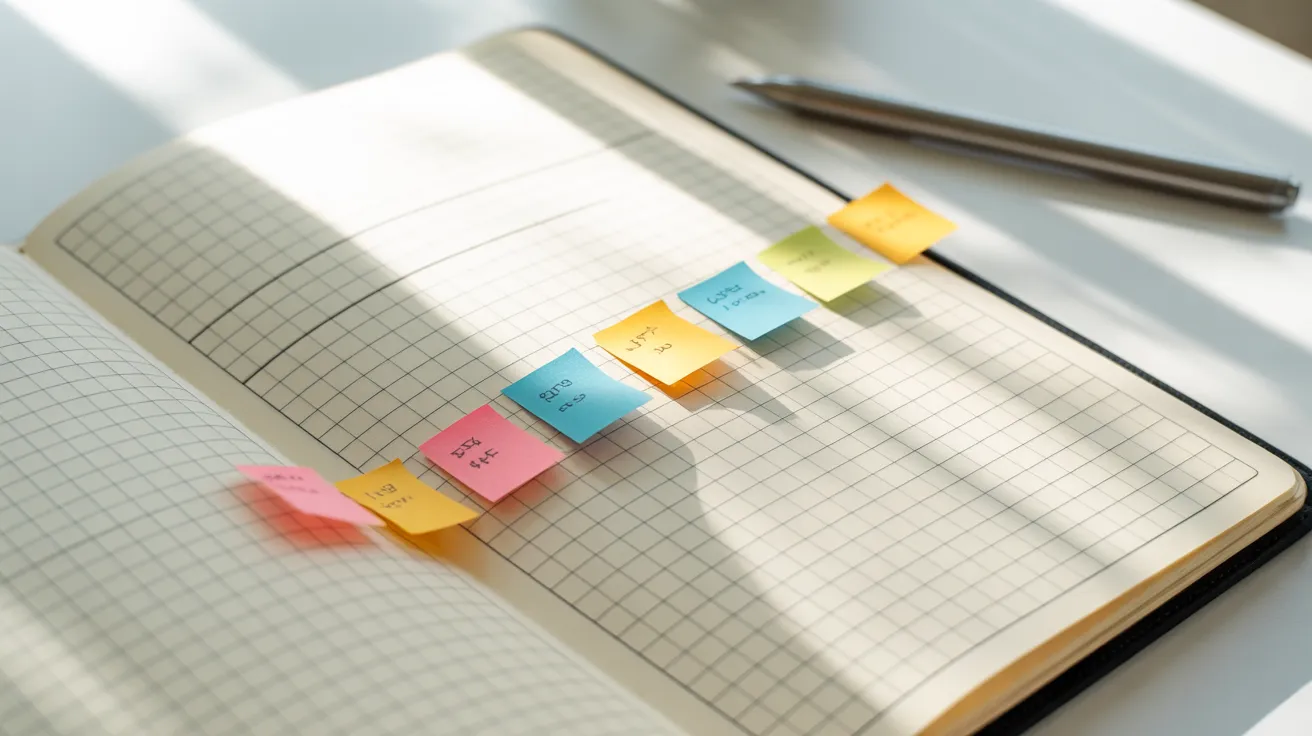
Does your mind feel like a web browser with too many tabs open? You start one task, but a notification pings. You switch to your email, then remember something you needed to search for. An hour later, you’re scrolling through a newsfeed, and that first important task is still sitting there, untouched. That feeling of mental friction, of being pulled in a dozen directions at once, is not just in your head. It’s a real, shared experience in our modern world.
You are not broken. Your brain is not failing. It’s simply overwhelmed. The constant stream of information, pings, and demands has created an environment where distraction is the default, and focus is a rebellion. Many people wonder, “Why is it so hard to focus?” The answer isn’t a lack of willpower. It’s a mismatch between our ancient brain wiring and our hyper-connected digital reality.
Welcome. My name is the focus coach from TheFocusedMethod.com, and I want to offer you a different path. A path that doesn’t rely on gritting your teeth and “trying harder.” Instead, we’re going to explore the science behind why focus feels so fleeting. We’ll uncover how your brain actually works when it comes to attention. Most importantly, we’ll build a toolkit of simple, practical rituals you can use to reclaim your attention, one intentional moment at a time.
This isn’t about becoming a productivity machine. It’s about creating more space for the work and life that truly matters to you. It’s about ending your day feeling accomplished and present, not drained and scattered. Let’s begin the journey of understanding your brain on distractions and learn how to train your brain for focus in a way that feels sustainable and kind.
📚 Table of Contents
- The Science of a Scattered Mind: Your Attention Model
- The Myth of the ‘Broken’ Brain
- Understanding Cognitive Load and Your Brain’s Budget
- The Hidden Cost of Context Switching
- Riding the Waves: Your Brain’s Natural Rhythms
- Four Foundational Rituals to Reclaim Your Focus
- The Startup Ritual: Setting Your Intention
- The Deep Work Entry Ritual: Crossing the Threshold
- Break Hygiene: How to Recharge, Not Deplete
- The Shutdown Ritual: Closing the Mental Tabs
- Your 20-Minute Focus Starter Pack
- Powerful Thought Tools for a Focused Mindset
- Reframe Perfectionism: “Good Enough” is Your Ally
- Reduce Friction: Make Focus the Easiest Choice
- The Reset Script: What to Do When You Get Derailed
- Focus in Action: Two Common Scenarios
- Frequently Asked Questions About Focus
- Is it okay to listen to music or white noise while I work?
- I know multitasking is bad, but I have to do it for my job. What can I do?
- What if I have no motivation to start a task? How can focus rituals help then?
- My brain feels completely fried by the evening. How can I focus on personal projects or hobbies?
- Your 7-Day Focus Challenge
The Science of a Scattered Mind: Your Attention Model
Before we can build new habits, we need to understand the landscape of our own minds. If you feel like you’re constantly fighting your own brain, it’s probably because you’ve been given the wrong battle plan. Let’s replace judgment with curiosity and look at what’s really happening when we get distracted.
The Myth of the ‘Broken’ Brain
First, let’s be clear: Your inability to focus for eight straight hours is not a personal failure. Our brains evolved for a very different world—a world of spotting predators in the periphery and tracking multiple environmental cues for survival. Your brain is a magnificent threat-and-opportunity detection system. It’s designed to be distractible. That ping from your phone mimics the sound of a twig snapping in the woods; it’s a novel stimulus that your brain is hardwired to investigate.
So, the problem isn’t that your brain is broken. The problem is that our modern environment hijacks this ancient survival mechanism for profit. Every app, notification, and headline is engineered to grab the very attention you’re trying to protect. Understanding this shifts the blame from you to the system, which is the first step toward reclaiming your power.
Understanding Cognitive Load and Your Brain’s Budget
Think of your brain’s capacity for focused attention like the RAM on a computer or a daily energy budget. Every single task, decision, and piece of information you process uses up some of this budget. This mental effort is called cognitive load. Cognitive load is the total amount of mental effort being used in your working memory.
When you have 30 browser tabs open, your computer slows down. It struggles to perform even simple tasks. Your brain is the same. Answering emails, worrying about a future meeting, listening to a podcast while working, and keeping a mental to-do list—all of these things contribute to your cognitive load. When that load becomes too high, your ability to think deeply, solve problems, and regulate your impulses plummets. This is why, at 3 p.m. on a stressful day, the allure of social media feels infinitely stronger than tackling a complex report. Your brain is simply out of budget.
The Hidden Cost of Context Switching
One of the biggest drains on our cognitive budget is multitasking. But what we call multitasking is actually a myth. The brain doesn’t do two complex tasks at once. Instead, it switches rapidly between them. This process is called context switching. Context switching is the process of stopping one task and starting another, which forces your brain to unload the context of the first task and load the new context of the second.
Every time you switch, you pay a tax. A 2007 study found that workers distracted by emails and phone calls saw a drop in IQ more than twice that found in studies of marijuana smokers. While the specifics of such studies are debated, the core finding is supported by decades of research: context switching costs time and energy. It fragments your attention and leaves you feeling busy but not productive. The antidote is not better multitasking; it’s embracing monotasking. Monotasking, also known as single-tasking, is the practice of dedicating your focus to one single task at a time until it is complete or until a planned break. This practice dramatically reduces your cognitive load and preserves your precious mental energy for what matters most.
Riding the Waves: Your Brain’s Natural Rhythms
Finally, your brain’s ability to focus isn’t a flat line; it’s a wave. We operate on natural cycles called ultradian rhythms, which are 90-to-120-minute cycles during which our energy and alertness wax and wane. At the peak of the cycle, you feel sharp and engaged. As you approach the trough, your brain needs a break. It needs to rest, consolidate information, and recharge.
Trying to power through these natural lulls is like trying to swim against a rip current. You’ll expend a massive amount of energy and make very little progress. This is why the “hustle harder” mentality often backfires, leading to burnout. Learning how to train your brain for focus means learning to work *with* these rhythms, not against them. It means honoring the need for focused sprints followed by periods of genuine rest. This is where intentional rituals and structured breaks become our greatest allies.

Four Foundational Rituals to Reclaim Your Focus
Understanding the theory is one thing; putting it into practice is another. The bridge between knowing and doing is ritual. Rituals are simply intentional, repeated behaviors that signal to your brain what it should be doing next. They reduce cognitive load by making decisions automatic, and they create clear boundaries in a boundaryless world. Here are four foundational rituals you can adapt to start training your brain for focus today.
The Startup Ritual: Setting Your Intention
How you start your day often determines how the rest of it will unfold. If the first thing you do is grab your phone and scroll through a flood of emails and social media notifications, you’ve already handed over control of your attention to others. You begin the day in a reactive, scattered state.
A Startup Ritual is a 5-to-15-minute routine that happens *before* you engage with the digital world. Its purpose is to ground you and set a clear intention for the day. It’s not about adding more to your plate; it’s about creating a calm foundation. Your ritual could include things like a few minutes of quiet stretching, meditating, journaling, or simply sipping a cup of coffee while looking out a window. The key action is to decide on your one or two most important tasks for the day *before* the avalanche of external demands begins. This simple act of prioritization frames your entire day around what truly matters.
The Deep Work Entry Ritual: Crossing the Threshold
You’ve set your intention, but now you need to tackle that important task. It’s easy to get stuck in “pre-work” mode—tidying your desk, checking just one more email, getting another snack. A Deep Work Entry Ritual is a short, 2-to-5-minute sequence that acts as a clear signal to your brain that it’s time to focus.
This ritual helps you transition from a state of distraction to a state of concentration. It could be as simple as: clearing your desk, putting on a specific pair of noise-canceling headphones, starting a focus playlist, setting a timer for 90 minutes, and closing all unnecessary tabs. The repetition of this sequence trains your brain. Over time, just putting on those headphones will trigger a state of readiness, making it easier to slip into flow. Flow is a mental state of being fully immersed in a feeling of energized focus, full involvement, and enjoyment in the process of an activity. This ritual helps create the conditions for flow to emerge.
Break Hygiene: How to Recharge, Not Deplete
As we learned, your brain operates in cycles. Taking breaks is not a sign of weakness; it’s a biological necessity for high-quality work. But not all breaks are created equal. Mindlessly scrolling through your phone during a five-minute break is like trying to recharge your drained phone by plugging it into another drained phone. It doesn’t work. This type of “break” just bombards your brain with more information, increasing cognitive load.
Good break hygiene means doing something that rests the prefrontal cortex—the part of your brain responsible for executive functions like focusing. A truly restorative break involves stepping away from screens. Stand up, stretch, walk around the room, get a glass of water, look out a window at something far away, or do a few deep breaths. These simple actions allow your brain to diffuse, process information in the background, and replenish its energy stores. A 5-minute real break is far more effective than a 15-minute social media break.
The Shutdown Ritual: Closing the Mental Tabs
In an always-on work culture, the workday never truly ends. It just bleeds into your personal life, leaving you feeling perpetually on-call. This constant low-level alertness is a major source of chronic cognitive load. A Shutdown Ritual is a clear, definitive end to your workday. It signals to your brain that it is safe to disengage and rest.
This 5-to-10-minute routine might involve reviewing what you accomplished, planning your top priorities for tomorrow, tidying your workspace, and saying a specific phrase like “work is done for the day.” This act of closing the loop prevents work-related thoughts from popping up while you’re trying to have dinner with your family. It’s one of the most powerful tools for preventing burnout and ensuring you can return to your work the next day with a fully charged brain.
Your 20-Minute Focus Starter Pack
Feeling overwhelmed by all this? Don’t be. Here is a simple starter pack you can implement tomorrow. Total time commitment: 20 minutes.
Morning (5 minutes): Before checking your phone, take 5 deep breaths and write down your single most important task for the day on a sticky note. Place it on your monitor.
Before Deep Work (2 minutes): Put your phone in another room. Close all tabs except the one you need. Set a timer for 25 minutes (one Pomodoro). Start.
After 25 Minutes (5 minutes): When the timer goes off, stand up. Walk to the kitchen and get a glass of water. Look out the window for 60 seconds. Do not check your phone.
End of Day (8 minutes): Take 5 minutes to plan tomorrow’s main task. Spend 3 minutes tidying your desk. Close your laptop and say, “Shutdown complete.”
That’s it. Twenty minutes to begin building a system that honors your brain’s natural rhythms and protects your most valuable asset: your attention.

Powerful Thought Tools for a Focused Mindset
Building rituals and designing your environment are crucial first steps. But what about the internal distractions? The voice of the inner critic, the pull of perfectionism, and the spiral of frustration when we inevitably get derailed. Training your brain for focus also requires a mental toolkit. These thought tools help you manage the internal landscape so your external rituals can succeed.
Reframe Perfectionism: “Good Enough” is Your Ally
Perfectionism is one of the most subtle and powerful drivers of distraction. We sit down to work on a big, important project, and the sheer weight of “getting it right” is paralyzing. The fear of producing something flawed makes us procrastinate. We escape that discomfort by turning to easy, low-stakes distractions like checking email or organizing our desktop. The task feels too big, so we do nothing at all.
The reframe is to embrace the concept of the “shitty first draft,” a term popularized by author Anne Lamott. Give yourself permission to do the work imperfectly. The goal is not a flawless final product on the first try; the goal is simply to start. Tell yourself, “My only job for the next 25 minutes is to get some ideas down, no matter how messy.” This lowers the stakes, reduces the initial friction, and allows you to build momentum. You can always edit a bad page; you can’t edit a blank one.
Reduce Friction: Make Focus the Easiest Choice
Our brains are wired to follow the path of least resistance. If your phone, full of endless novelty, is sitting on your desk, and your important work requires logging into three different systems, which path do you think your brain will choose? We need to actively design our physical and digital spaces to make focus the easy option and distraction the hard one.
This is the principle of reducing friction. For every task you want to do, ask: “How can I make this 10% easier to start?” This might mean laying out your workout clothes the night before, opening the document for your big project before you shut down for the day, or creating a one-click shortcut to your work software. Conversely, for every distraction, ask: “How can I make this 10% harder to access?” Log out of social media accounts. Move distracting apps to the last page of your phone’s home screen. Put your phone in a drawer in another room. Each small bit of friction you add gives your conscious mind a moment to pause and decide if that’s really what you want to be doing.
The Reset Script: What to Do When You Get Derailed
You will get distracted. It is not a matter of if, but when. A notification will slip through, a colleague will interrupt you, or your own mind will wander. The most critical moment is not the distraction itself, but what you do in the seconds *after* you realize you’ve been derailed.
Most of us react with frustration and self-criticism (“Ugh, I can’t believe I just wasted 20 minutes! I’m so bad at this.”). This shame spiral only depletes your mental energy further, making it even harder to get back to work. Instead, you need a compassionate and practical Reset Script. It has three simple steps:
1. Acknowledge without judgment: Simply say to yourself, “Okay, I was distracted.” That’s it. No name-calling, no drama.
2. Gently ask what’s next: Look at your plan or sticky note and ask, “What is the next single action I need to take?” Identify the smallest possible step.
3. Take one physical action: Put your hands back on the keyboard. Re-read the last sentence you wrote. Click on the correct window. This physical step breaks the inertia and pulls you back into the task.
This script turns a moment of failure into a moment of practice. Every time you use it, you strengthen the neural pathway for refocusing, making it easier and more automatic over time.

Focus in Action: Two Common Scenarios
Theory is helpful, but seeing these principles applied to real-world situations makes them more tangible. Let’s walk through how to use our new rituals and thought tools to navigate two common focus challenges.
Example 1: The Tight Deadline
The Situation: Sarah has a major report due at 5 p.m. It’s already noon, and she feels a rising sense of panic. Her mind is racing, she keeps checking her email for “urgent” requests, and the blinking cursor on the blank page is mocking her.
The Old Approach: Try to “power through.” Keep the document open while simultaneously answering emails to feel productive. Get increasingly stressed as the afternoon wears on, fueled by caffeine and anxiety. The final product is rushed and subpar.
The FocusedMethod Approach:
1. Execute a Reset Script: Sarah notices her panic. She takes a deep breath and says, “Okay, I’m panicking. What’s the next action?” She decides the next action is to make a plan, not to write.
2. Reduce Cognitive Load: She takes 10 minutes to break the report into tiny, concrete chunks. “Section 1: Write intro paragraph.” “Section 2: Pull the Q3 data.” “Section 3: Create two charts.” This transforms a daunting task into a manageable checklist.
3. Use an Entry Ritual and Monotasking: Sarah closes her email client and Slack. She puts her phone on silent and moves it to her bag. She sets a timer for 45 minutes and tells herself, “My only job is to write the intro paragraph. Nothing else.”
4. Practice Break Hygiene: When the timer goes off, she stands up, walks away from her desk for 5 minutes, and drinks a glass of water. She does not check her phone. She then returns, resets the timer, and tackles the next chunk on her list.
By breaking the work down and using structured focus blocks, Sarah manages her anxiety and makes steady progress. She works with her brain’s rhythms instead of fighting against them, leading to a better outcome with less stress.
Example 2: The Noisy Home Office
The Situation: Ben works from home in a small apartment with his partner, who is also on calls. Construction is happening outside. He’s struggling to concentrate on a complex coding problem, and every sound pulls him out of his flow.
The Old Approach: Get increasingly irritated. Try to turn up his music to drown out the noise, which just adds another layer of auditory distraction. Snap at his partner. End the day feeling frustrated and unproductive.
The FocusedMethod Approach:
1. Reduce Friction (for Focus): Ben invests in a good pair of noise-canceling headphones. This is a crucial tool for controlling his auditory environment. He creates a “deep work” playlist of ambient music he knows doesn’t distract him.
2. Increase Friction (for Distraction): Ben communicates with his partner. They agree on “headphone on = do not disturb” signals. He closes the door to his workspace, adding a physical barrier to interruption.
3. Implement an Entry Ritual: When it’s time to code, he puts on his headphones, starts his playlist, and opens only the necessary programming windows. This ritual signals to his brain that it’s time to tune out the external world and tune into the task.
4. Use a Reframe Thought Tool: When a particularly loud noise from the construction site breaks his concentration, instead of getting angry, he uses the Reset Script. “Okay, a loud noise. Annoying, but it’s passed.” He takes a deep breath and re-reads the last line of code he wrote to get back on track quickly and without judgment.
Ben can’t control the external noise completely, but by focusing on what he *can* control—his tools, his communication, and his reaction—he creates a bubble of focus that allows him to do his deep work even in a challenging environment.

Frequently Asked Questions About Focus
As you begin this journey, questions will naturally arise. Here are answers to some of the most common queries we hear from clients learning how to train their brain for focus.
Is it okay to listen to music or white noise while I work?
This is highly individual, but there are some general guidelines. For many people, music with lyrics can be distracting because it engages the language-processing centers of the brain, competing for cognitive resources. Instrumental music, ambient sounds, or white noise can be very effective at masking distracting background noises and helping you focus. The key is to find audio that is complex enough to block out distractions but simple and repetitive enough that your brain can easily tune it out. Experiment and see what works for you. If you find yourself singing along, it’s probably not a good focus choice.
I know multitasking is bad, but I have to do it for my job. What can I do?
Many jobs require us to be responsive and juggle multiple things. The goal isn’t to never context switch, but to do it intentionally. Instead of reacting to every ping, try “batching.” Dedicate specific blocks of time for specific tasks. For example, have three 30-minute “email and messages” blocks throughout the day (e.g., at 9 am, 1 pm, and 4 pm). Outside of these blocks, turn off notifications. This allows you to be responsive while still protecting larger chunks of time for uninterrupted deep work. It’s about structuring your day to minimize the *unintentional* and constant switching that drains your brain.
What if I have no motivation to start a task? How can focus rituals help then?
This is a common and important question. Motivation is a fickle emotion; it comes and goes. A robust system of rituals is powerful because it doesn’t rely on motivation. Action precedes motivation. You don’t wait until you feel like brushing your teeth; you just do it because it’s a habit. The same principle applies here. Your Deep Work Entry Ritual is designed to get you started even when you don’t feel like it. The goal is to make the first step so small and automatic that you can do it without needing a surge of inspiration. Tell yourself, “I’ll just work for five minutes.” More often than not, once you start, the motivation will follow.
My brain feels completely fried by the evening. How can I focus on personal projects or hobbies?
This is a classic case of high cognitive load throughout the day. If your brain’s budget is spent by 5 p.m., you have nothing left for personal pursuits. The most effective strategy is to implement a strict Shutdown Ritual. When you close your laptop and declare the workday over, you need to honor that boundary. Then, create a “transition ritual” between your work self and your home self. This could be a short walk, changing your clothes, or spending 10 minutes meditating. This helps your brain switch contexts fully, preventing work residue from draining your evening energy and freeing up mental space for the things you love.

Your 7-Day Focus Challenge
You’ve learned why it’s so hard to focus and explored a powerful set of tools and rituals to reclaim your attention. But knowledge without action is just trivia. The only way to see if this works is to try it. I invite you to take on a simple, 7-day challenge. This isn’t about perfection; it’s about practice.
For the next seven days, commit to these three actions. They are small, achievable, and designed to give you the biggest return on your attention investment.
1. Define Your “One Thing” Daily. Each morning, before you look at your phone or computer, take just two minutes. Identify the single most important task that, if completed, would make your day a success. Write it on a physical sticky note and put it where you can see it. This is your anchor for the day.
2. Practice Two “Focus Blocks.” Schedule two 45-minute blocks in your calendar for focused work on your “one thing.” During these blocks, put your phone out of sight and turn off all notifications. When the 45 minutes are up, take a 5-minute screen-free break. That’s it. Just two blocks per day.
3. Implement a 5-Minute Shutdown. At the end of your workday, before you close your laptop, take five minutes. Tidy your desk and write down your plan for tomorrow. Then, close your computer and consciously say to yourself, “The workday is now over.”
That is your entire challenge. It is a gentle introduction to working with your brain instead of against it. Pay attention to how you feel at the end of each day. Do you feel a little less scattered? A little more in control? That feeling is the beginning of a profound shift.
Your attention is your most precious resource. It is the currency with which you experience your life and create your work. Protecting it isn’t a luxury; it’s the foundation of a meaningful existence. Start small, be kind to yourself, and begin the rewarding practice of reclaiming your focus, one day at a time. For more information on cognitive science, you can visit the American Psychological Association or the National Institutes of Health.
Disclaimer: The information provided in this article is for informational purposes only and is not intended to be a substitute for professional medical or psychological advice, diagnosis, or treatment. Always seek the advice of your physician or other qualified health provider with any questions you may have regarding a medical condition.






